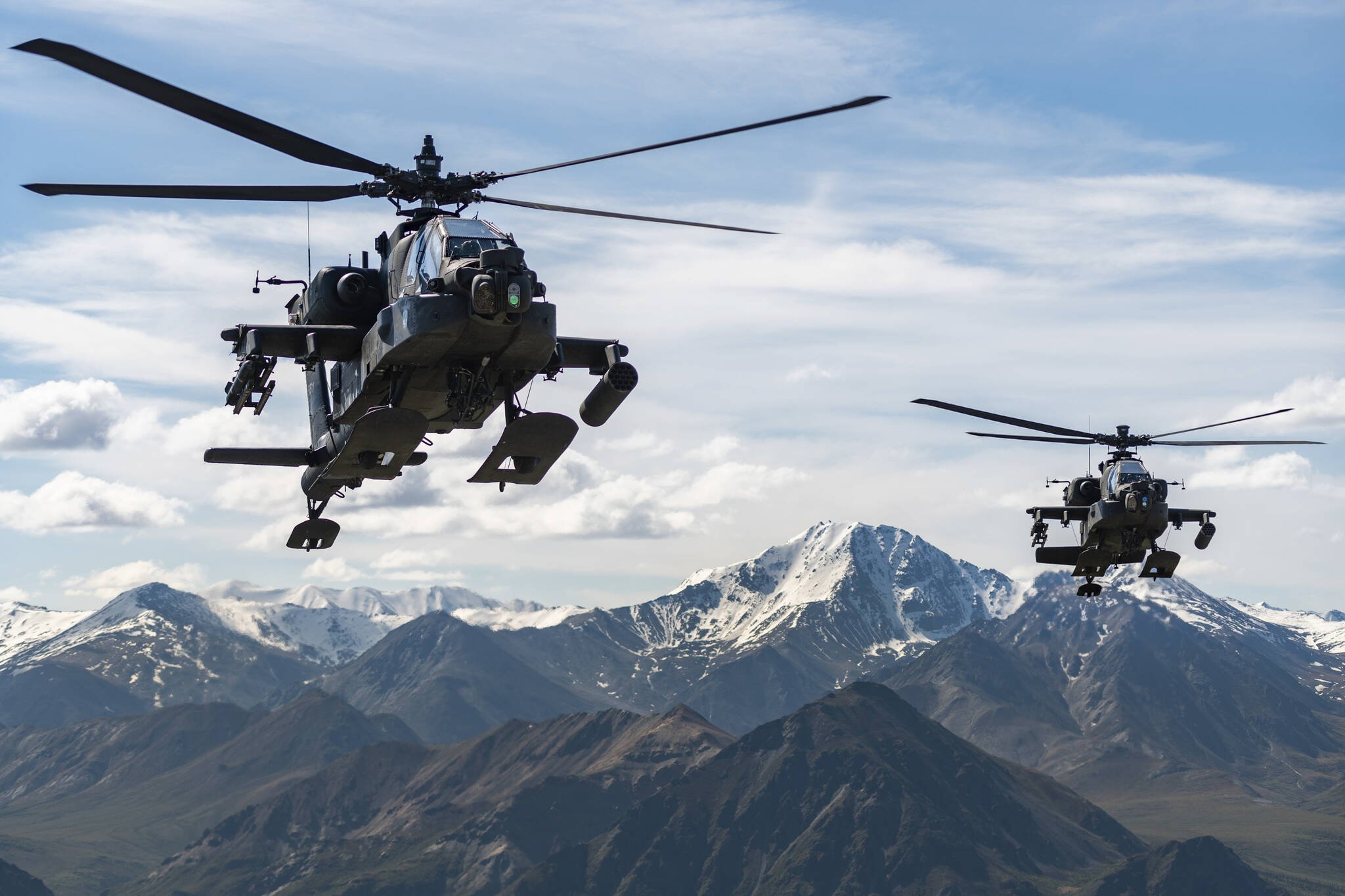The U.S. Army has grounded aviation units for training after 12 soldiers died within the last month in helicopter crashes in Alaska and Kentucky, the military branch announced Friday.
The suspension of air operations was effective immediately, with units grounded until they complete the training, said Lt. Col. Terence Kelley, an Army spokesperson. For active-duty units, the training is to take place between May 1 and 5. Army National Guard and Reserve units will have until May 31 to complete the training.
“The move grounds all Army aviators, except those participating in critical missions, until they complete the required training,” the Army said in a statement.
On Thursday, two Army helicopters collided near Healy, Alaska, killing three soldiers and injuring a fourth. The aircraft from the 1st Attack Battalion, 25th Aviation Regiment at Fort Wainwright, near Fairbanks, were returning from training at the time of the crash, according to the Army. The unit is part of the 11th Airborne Division, which is nicknamed the “Arctic Angels.”
[Recent crashes in training missions]
Military investigators were making their way to Alaska’s interior, with a team from Fort Novosel, Alabama, expected to arrive at the crash site by Saturday, said John Pennell, a spokesperson for the U.S. Army Alaska. Little new information about the crash was released Friday.
The Army on Thursday said two of the soldiers died at the site and the third on the way to a hospital in Fairbanks. The injured fourth soldier was taken to a hospital and was in stable condition Friday, Pennell said. The names of those who were killed were not immediately released.
“The safety of our aviators is our top priority, and this stand down is an important step to make certain we are doing everything possible to prevent accidents and protect our personnel,” Army Chief of Staff James McConville said of the decision to ground flight units for training.
The crash is the second accident involving military helicopters in Alaska this year.
In February, two soldiers were injured when an Apache helicopter rolled after taking off from Talkeetna. The aircraft was one of four traveling to Joint Base Elmendorf-Richardson in Anchorage from Fort Wainwright.
In March, nine soldiers were killed when two U.S. Army Black Hawk medical evacuation helicopters crashed during a routine nighttime training exercise about 30 miles (50 kilometers) northeast of Fort Campbell, Kentucky.
The Army said that while Thursday’s crash and the one in Kentucky remain under investigation, “there is no indication of any pattern between the two mishaps.”
Healy is home to about 1,000 people roughly 10 miles (16 kilometers) north of Denali National Park and Preserve, or about 250 miles (400 kilometers) north of Anchorage.
Located on the Parks Highway, the community is a popular place for people to spend the night while visiting Denali Park, which is home to the continent’s tallest mountain.
Healy is also famous for being the town closest to the former bus that had been abandoned in the backcountry and was popularized by the book “Into the Wild” and the movie of the same name. The bus was removed and taken to Fairbanks in 2020.

